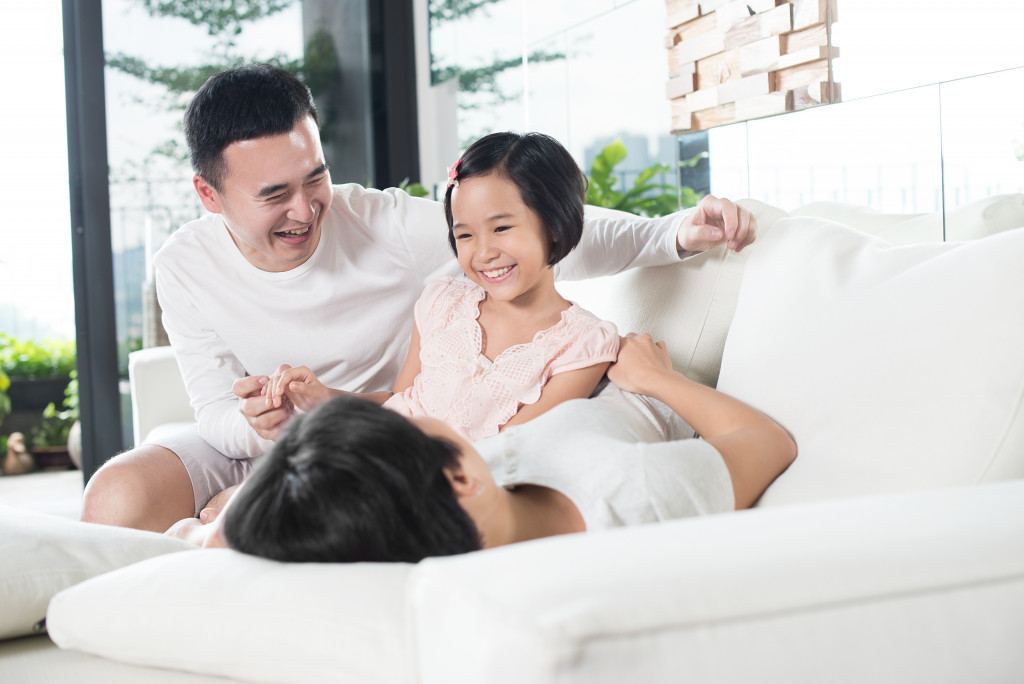Children can experience skewed body image even before they hit ten years old. In a 2018 study by the University of Melbourne, kids can begin struggling with seeing their bodies as early as eight to nine years old as their hormone levels increase.
While parents can help their children promote body positivity, they need not wait until their kids hit puberty before they do so. The question is, how can moms and dads do it? Here are x ideas:
1. Let Them Explore Their Looks and Styles
One of the best ways to help them see their bodies more positively is to explore different looks and styles. By letting children do this, parents set the message that children will always choose to look like the rest of their friends or stand out. Whichever way they choose, the most important thing is they feel more comfortable with their skin, and they’re happier.
Today, you can already find many tools that encourage more flexible looks, from a rotating hair styling tool to three-way bras and saris that children can turn into long and mini skirts. Parents can also bring their kids shopping and let them pick the dresses and accessories they want.
2. Choose Their Company Well
Based on many parents’ experiences, mothers and fathers are less likely to comment on the kind of company the children keep once they reach their teenage years. Thus, the best time to emphasize the message of choosing their friends well is when they’re still young.
But why does this matter? In a 2019 research by the University of Waterloo, the people an individual surrounds with can impact their perception of their bodies.
For the study, the team asked almost 100 female undergraduate students to write down their reflections when interacting with non-body-focused and body-focused people for seven days.
Based on their analysis, someone who often interacts with people not obsessed with body figures and looks is more likely to appreciate their own bodies. These interactions may even reduce the risk of developing eating disorders or promote mindful or intuitive eating.
An excellent way to help children meet less-body-focused individuals is to encourage them to join clubs based on interests or hobbies.
Further, surround them with allies. Think of compassionate doctors who can help them focus on their overall physical health than their sizes, psychologists and counselors who can look out for their mental state, and teachers who can advocate positive body image in the classroom.

3. Drop Some Truths
Parents need to be honest about certain things related to body images:
- The things they see on social media could be half or even a minuscule picture of a person’s entire life journey. In fact, the Internet can be filled with full and half-lies. Images can be Photoshopped, and influencers on Tiktok and Instagram can add filters to their faces.
- Bodies come in many forms, and theirs may not be the same as their friends, siblings, and even their parents when they’re still young—and that’s okay.
- Body sizes can change over time. When they reach their thirties, for example, their metabolism can begin to slow down, which means they may build more fat than when they’re younger. Bodies can also change when they get pregnant. Overweight individuals can lose weight, while thin ones can build muscles. What is most important is to learn to love and accept their bodies in whatever size it is in.
- People need to realize that their bodies need more credit than they’re giving it. Whatever its size, it’s the reason one is alive.
4. Expose Them to Nature
A 2018 research composed of a series of studies showed one tool that parents can use to promote a positive body image: nature. In the first three studies, the researchers found an association between better body image and exposure to photographs showing natural environments, such as forests and other green spaces.
Meanwhile, the fourth and fifth studies saw participants walking in nature or entering a Primrose Hill Park. Although the exposure method changed, the researchers still find the same direct correlation they saw in the first three studies.
Nature may help encourage one to appreciate their bodies more because it helps them distance themselves from body-focused individuals.
The presence of trees, plants, and other natural elements may also encourage soft fascination. It means that nature creates a feeling of pleasure, which lowers stress and prevents rumination that worsens anxiety.
Lastly, being with nature may help children shift their focus on their bodies’ appearance to what their bodies can do, including walking for miles.
Parents cannot control how the rest of the world thinks and sees their children, but they have the power to help their kids feel confident to deal with judgment. Hopefully, these tips can help them achieve this goal.

